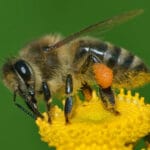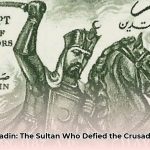Ever wonder how a million ants can work together like a single, giant organism? It’s like a city running itself perfectly, without any central command. This article explores the fascinating world of superorganisms, particularly the intricate societies of ants and bees, examining their collective decision-making processes and the question of whether they truly represent a single, unified mind. For more on animal consciousness, see this article.
Super-Organisms: Are Ant Colonies and Beehives a Single Conscious Entity?
Imagine a bustling metropolis inhabited by millions of tiny citizens, all working together with remarkable precision. This is the essence of an ant colony or a beehive, as described by the compelling “superorganism” hypothesis. But is this extraordinary teamwork merely complex organization, or does it represent something more profound – a singular, collective consciousness? Let’s delve into this captivating debate and uncover how the science of collective behavior sheds light on this fascinating concept.
Eusociality: The Pinnacle of Insect Teamwork and Colony Dynamics
Ants, bees, termites, and certain species of wasps exemplify eusociality, a social structure that elevates teamwork to unprecedented levels. Picture it as a highly efficient, specialized factory: a queen (or queens) serves as the reproductive core, responsible for laying eggs and ensuring the colony’s propagation. Workers form the tireless labor force, caring for the young (brood care), foraging for food, constructing and maintaining elaborate nests, and defending the colony. Soldiers, often morphologically distinct from workers, act as the specialized security force, safeguarding the colony against external threats. This division of labor is pivotal to the colony’s success, showcasing how specialized collaborative activity leads to extraordinary societal achievements such as efficient resource allocation, robust defense strategies, and complex nest architecture. The scale and efficiency of this cooperation prompt the fundamental question: Does this level of highly specialized collaborative activity suggest a single, unified consciousness at play within the colony, or is it an emergent property of decentralized interactions?
Talking Without Words: Decoding the Chemical Language of Insect Colonies
How do these insect societies achieve such remarkable coordination without traditional communication methods like spoken language? They rely on a sophisticated system of chemical signals called pheromones – think of it as a complex language of smells and tastes conveying essential information throughout the colony. These pheromones, secreted from various glands, transmit critical messages such as “Food this way!”, “Danger!”, “This is home!”, or even “I am of this colony!”. Pheromones serve as the colony’s internal communication network, a decentralized nervous system that facilitates rapid responses to environmental stimuli. A single ant discovering a new food source, for example, can quickly recruit nestmates using a trail pheromone, leading to efficient resource exploitation. This efficiency allows the colony to adapt rapidly to environmental changes, optimize foraging strategies, and coordinate defensive maneuvers. But does this intricate communication system, while undoubtedly crucial for guiding colony behavior, indicate a higher order of communal intelligence akin to a shared consciousness?
The Magic of Emergence: When Collective Behavior Creates Complexity
One of the most captivating arguments supporting the superorganism concept lies in the phenomenon of “emergent behavior.” Consider the intricate architecture of an ant nest, with its complex tunnels, chambers, and ventilation systems – it’s not designed by a single architect or directed by a central plan. Instead, it emerges from the collective actions of countless ants following simple rules, interacting with each other and their environment. Each ant contributes to the construction based on local cues and pheromone gradients, resulting in a level of architectural complexity that far exceeds the capabilities of any single individual. Similarly, their collective foraging strategies, defensive maneuvers, and thermoregulation arise from the combined actions of individuals, surpassing the cognitive or physical capabilities of any single ant. This emergent complexity provides a compelling argument in favor of the superorganism concept, with intricate coordinated activities hinting at a higher level of organization operating beyond the individual level. But is this remarkable collective intelligence a sign of a shared consciousness, or simply the result of complex algorithms playing out in a decentralized system?
The Great Debate: Defining the Boundaries of a Superorganism
While the evidence for incredible coordination and interconnectedness in ant colonies is undeniable, the question of whether they constitute a single conscious entity ignites passionate debate among scientists and philosophers. Some contend that the term “superorganism” should apply only to systems where biological evolution directly targets the entire system, selecting for traits that benefit the colony as a whole, even at the expense of individual fitness. This stringent definition adds complexity to the term’s application across different scales of biological organization. Others highlight the varying degrees of individual autonomy within ant colonies, particularly in species with less rigid caste systems, arguing that the level of integration falls short of the interconnectedness seen in multicellular organisms, which are unequivocally considered single entities. Ultimately, the debate often hinges on the challenges of defining “consciousness” precisely and the difficulties in extrapolating individual-level concepts to collective systems. It’s a challenging question with no easy answers, demanding continued research and interdisciplinary collaboration.
Ants vs. Humans: Exploring the Parallels and Divergences in Social Structures
A common comparison emerges between ant colonies and human societies, both exhibiting complex social structures, division of labor, and collaborative efforts towards shared goals. However, a critical difference lies in the nuances and diversity of human communication. We use spoken and written language, non-verbal cues (body language, facial expressions), and countless subtle contextual cues, leading to greater individual autonomy, flexible social roles, and the capacity for abstract thought and innovation. Humans make independent choices regularly, engage in critical thinking, and exhibit a wide range of behaviors that are not solely dictated by instinct or pheromonal signals, a distinct contrast to the rigid, genetically-determined roles observed in most ant colonies, at least concerning the direct application of the “superorganism” model. While human societies exhibit emergent properties and collective behaviors, individual agency and self-awareness remain defining characteristics, differentiating them from the highly integrated, genetically-related individuals comprising a superorganism.
The Future of Superorganism Research: Charting New Frontiers in Understanding Collective Behavior
The study of superorganisms is a dynamic, ever-evolving field, pushing the boundaries of our understanding of biological organization and social behavior. Scientists actively explore the complexities of pheromone communication, the intricacies of group decision-making, and the mechanisms underlying colony-level immune responses. Advanced technologies, such as high-resolution imaging, genomic sequencing, and computational modeling, are providing unprecedented insights into the inner workings of these fascinating systems. Defining consciousness within a collective, understanding the evolutionary pressures driving eusociality, and unraveling the interplay between genetic determinism and environmental influences remain key challenges for future research. The investigation of superorganisms promises remarkable insights into fundamental biological principles, with potential applications ranging from robotics and swarm intelligence to the development of sustainable agricultural practices and novel approaches to understanding human social behavior. So, are ant colonies single minds? The answer remains elusive, but the journey of discovery is truly captivating, promising to reshape our understanding of life itself.
How to Apply Ant Colony Optimization to Solve Complex Logistical Problems
Key Takeaways:
- Ant colony optimization (ACO) mimics the efficiency found in nature, providing a practical approach to complex problem-solving.
- ACO excels at identifying near-optimal solutions for intricate logistical challenges, making it valuable in various industries.
- Because of its adaptive nature, it’s highly effective in dynamic situations, such as dealing with sudden supply chain disruptions or fluctuating transportation costs.
- While powerful, ACO requires careful tuning of parameters and a thorough understanding of its computational demands to achieve optimal results.
- Integrating ACO into existing systems requires strategic planning and interdisciplinary collaboration to ensure seamless functionality.
Understanding the Ant Colony Algorithm: A Blueprint for Optimization
Imagine a group of ants diligently seeking food, collectively finding the shortest path between their nest and a food source without any central coordinator. This remarkable behavior inspires ACO, a potent algorithm for optimization. How does it work? Ants, during their foraging, deposit pheromones on the ground, marking the paths they traverse. These pheromones evaporate over time, but paths that are frequently used have a higher pheromone concentration. Ants probabilistically choose paths with stronger pheromone trails, reinforcing the more efficient routes over time. This positive feedback loop allows the colony to collectively discover the shortest path. This process can be replicated computationally to tackle complex logistical problems, unlocking new efficiencies by mimicking the ants’ decentralized problem-solving abilities.
Applying ACO to Logistics: A Step-by-Step Guide
The methodology How to apply ant colony optimization to solve complex logistical problems involves several key steps, ensuring a systematic approach to implementation and optimization.
-
Problem Definition: Clearly define your logistical challenge. Common examples include vehicle routing (optimizing delivery routes for a fleet of vehicles), warehouse optimization (arranging items in a warehouse to minimize travel time), or supply chain network design (determining the optimal location of warehouses and distribution centers). Precisely pinpoint your constraints (time windows, distance limitations, vehicle capacity, inventory levels) and clearly define what you aim to optimize (total cost, delivery time, total distance traveled, resource utilization).
-
ACO Implementation: Select an appropriate ACO algorithm variant. There are several ACO variants available, each with its strengths and weaknesses. Consider the scale of your problem (number of variables and constraints), the level of dynamism (how frequently the problem changes), and available computational resources to choose the best fit. Popular ACO variants include Ant System, Ant Colony System, and Max-Min Ant System.
-
Parameter Tuning: Carefully adjust parameters like pheromone evaporation rate (how quickly pheromones disappear), pheromone deposit intensity (how much pheromone is laid down), heuristic information (incorporating problem-specific knowledge), and the number of ants (number of agents exploring the solution space). Achieving optimal ACO performance depends on this crucial step. Systematic experimentation and parameter selection using techniques like grid search or response surface methodology are essential.
-
Integration with Existing Systems: Seamless integration with existing logistics management systems (LMS) or enterprise resource planning (ERP) systems is critical for ACO’s effectiveness. Integration might involve custom software development using programming languages like Python, Java, or C++, or ensuring compatibility with existing logistics software through APIs or data connectors. Seamless data flow is essential to provide ACO with real-time information and to implement the optimized solutions generated by the algorithm.
-
Monitoring and Evaluation: Continuously monitor performance after implementation. Carefully track key performance indicators (KPIs) such as delivery time, fuel consumption, transportation costs, and customer satisfaction. Establish baseline metrics before implementation and compare them to post-implementation results to quantify the benefits of ACO. Adjust parameters as needed based on real-world performance to ensure your goals are being met and that the algorithm adapts to changing conditions.
ACO’s Strengths and Weaknesses: A Balanced Perspective
| Advantage | Disadvantage |
|---|---|
| Handles dynamic environments | Computationally intensive for large-scale problems |
| Adaptable to various problem types | Suboptimal solutions without proper tuning |
| Relatively simple to grasp | Requires specialized implementation expertise |
| Finds near-optimal solutions | Can be challenging to integrate with legacy systems |
Real-World Applications: Examples of Logistics Optimization
ACO has proven successful in diverse logistics settings, demonstrating its versatility and effectiveness. It optimizes delivery routes for e-commerce companies, significantly reducing delivery times, fuel costs, and overall transportation expenses. In supply chain management, ACO streamlines inventory management, reduces warehousing costs, and optimizes warehouse layouts to minimize worker travel time. It even finds application in traffic flow management, routing vehicles to minimize congestion, and in disaster relief logistics, optimizing the distribution of supplies to affected areas.
Future Directions: Innovations in Ant Colony Optimization
ACO’s potential is enormous, with ongoing research focused on expanding its capabilities and applications. Researchers continually refine ACO algorithms, developing hybrid approaches that integrate ACO with other optimization techniques such as genetic algorithms, simulated annealing, and linear programming to further enhance performance. The integration of ACO with machine learning and artificial intelligence (AI) is also a promising area of research, allowing the algorithm to learn from data and adapt to changing conditions more effectively. The increasing availability of data and computing power will further enhance ACO’s capabilities, facilitating even more efficient and adaptable logistics solutions. The ongoing exploration of ACO highlights its enduring value in tackling complex logistical challenges, streamlining everything from delivery routes to disaster response, and paving the way for more efficient and resilient supply chains.
Ant Colony Communication Strategies: A Deep Dive into Pheromone-Based Signaling
Key Takeaways:
- Ant colonies aren’t simply collections of individuals, but function as remarkably coordinated units, thanks to sophisticated communication strategies.
- Ant Colony Communication Strategies rely not only on pheromones, but also incorporate touch and vibrations for enhanced efficiency, allowing for rapid and nuanced information exchange.
- Pheromones serve as chemical messages, guiding ants to food sources, marking trails, signaling alarms, and regulating social interactions within the colony.
- Tactile communication via antennae plays a vital role in close-range interactions, reinforcing colony cohesion, facilitating task allocation, and enabling nuanced information transfer.
- Vibrations act as rapid alert systems, quickly spreading warnings throughout the colony, ensuring collective awareness of potential threats or disturbances.
- The precise communication methods differ between ant species, reflecting unique evolutionary histories, environmental conditions, and social structures.
How do millions of ants achieve such flawless cooperation, building complex nests, foraging efficiently, and defending their colony against invaders? They communicate, albeit not in the way humans do. Ant communication is a fascinating blend of chemical signals, physical touches, and vibrations, a complex system that has allowed these tiny creatures to build enormous, intricate societies characterized by remarkable cooperation and efficiency.
The Power of Pheromones: Chemical Conversations in the Colony
Let’s begin with pheromones, the stars of the ant communication show. These chemical signals represent the ants’ language, with each scent conveying specific information. Imagine them as tiny, airborne (or surface-borne) messages, where a trail pheromone released by a successful forager creates a scent trail guiding others to a rich food source. Different pheromones signal alarm, alerting others to danger, influence reproductive behavior, regulate caste differentiation, and even mediate social recognition. It’s a chemical language far more nuanced than we might imagine, enabling complex social interactions and coordinated colony behavior.
Beyond Scent: Exploring the Roles of Touch and Vibration
However, ants don’t rely solely on smell. Ant antennae act like sophisticated sensory tools, constantly probing and touching, transferring information during close-range encounters. Think of it as a constant exchange of greetings and information, crucial for colony cohesion and task allocation. These tactile interactions allow ants to assess the size and health of nestmates, recognize their caste, and coordinate tasks such as nest building and brood care.
Furthermore, ants possess the ability to transmit vibrations through the ground, often used as rapid alarm signals, spreading warnings of a threat instantly throughout the nest. These vibrations can be generated by drumming their gasters (abdomens) against the substrate or by stridulation (rubbing body parts together), creating a colony-wide earthquake warning system, alerting individuals to potential dangers such as predators or nest disturbances.
Species-Specific Strategies: Adapting Communication to the Environment
It’s critical to remember that ant communication varies significantly between species. The specific mix of chemical signals, along with the relative importance of touch and vibrations, depend on the environmental pressures that each population faces, their foraging strategies, and their social organization. Desert ants, for instance, may rely heavily on visual cues and cuticular hydrocarbons for communication, given the arid landscapes and the importance of water conservation, whereas forest-dwelling ants might more effectively use scent trails and tactile communication in the dense undergrowth. This variety underscores the flexibility and adaptability of ant communication systems, showcasing how these tiny creatures have evolved to thrive in diverse environments.
Unanswered Questions: Future Research Directions
While advancements in understanding ant communication have been significant, many questions remain, driving ongoing research in this fascinating field. Scientists still work to quantify the relative importance of pheromones, touch, and vibrations in different species, unraveling the complex interplay between these communication modalities. How do ants integrate multiple signals to form a complete picture of their environment? How does this complex communication system contribute to collective intelligence, allowing ant colonies to solve complex problems and adapt to changing conditions? How do environmental factors, such as temperature, humidity, and food availability, influence ant communication strategies? The answers to these questions will not only advance our fundamental knowledge of these remarkable insects but also help develop more efficient algorithms and systems in areas like robotics, swarm intelligence, and distributed computing, drawing inspiration from the remarkable cooperative capabilities of ant colonies.
Comparative Analysis of Eusociality: Ant Colonies versus Other Superorganisms
Key Takeaways:
- Eusocial insect colonies, like ant colonies and honeybee hives, exhibit remarkable organization, leading some to view them as “superorganisms,” yet the appropriateness of this label is debated among scientists due to variations in their organization and control mechanisms.
- The core question revolves around the extent to which these societies are controlled hierarchically versus through self-organization, influencing the functioning of the superorganism and the degree of individual autonomy within the colony.
- Honeybees often display a higher degree of hierarchical control compared to some ant species, relying heavily on queen pheromones and rigid caste systems, illustrating the diversity of organization within eusocial insect colonies.
- Understanding the balance between self-organization and hierarchical control is crucial to comprehending colony function and resilience, adding nuance to the debate about whether or not to apply the label, superorganism, to any one colony.
- Future research should focus on isolating the effects of different signaling pathways (pheromonal, tactile, vibrational) and developing integrated models to capture the full complexity of eusocial colony dynamics, emphasizing that comparative analysis is key to understanding these diverse social systems.
The Superorganism Debate: Collective Minds vs. Complex Systems
Imagine a city where millions of individuals work cohesively without a central government dictating every action; this mirrors the dynamics of self-organized eusocial insect colonies, like some ant species. However, other colonies appear to be more centrally controlled. But are these societies truly “superorganisms,” single entities acting with a unified purpose, or are they simply complex systems exhibiting emergent behavior? The answer hinges on understanding the interplay between individual autonomy and collective control.
Many scientists believe that Comparative Analysis of Eusociality: Ant Colonies versus Other Superorganisms is key to unraveling this mystery. Examining diverse species reveals fascinating variations in social structure, communication mechanisms, and decision-making processes. For example, ant colonies frequently showcase impressive capabilities for collective decision-making in foraging, nest site selection, and defense, while the organization of honeybee colonies often seems more centrally controlled by the queen’s pheromones and rigid caste assignments.
Self-Organization vs. Hierarchical Control: Balancing Colony Dynamics
The prevailing “self-organization” model suggests that local interactions between individual insects drive overall colony behavior. Individual ants or bees make decisions based on local cues and interactions with their neighbors, and the colony-level organization emerges from these decentralized interactions. This is reminiscent of a flock of birds changing direction as individuals react to the movements of their neighbors, without any single bird acting as the leader.
However, new research suggests that this isn’t the whole story. A hierarchical model posits a higher level of control, with “second-order signals” influencing broader colony-level processes. These second-order signals could include queen pheromones that regulate caste development, long-term resource allocation strategies dictated by environmental conditions, or genetic predispositions that influence individual behavior. Thus, the colony organization may be influenced by both top-down control and bottom-up self-organization.
Honeybees: A Case Study in Hierarchical Control and its Organizational Impacts
Honeybee colonies, known for their sophisticated social organization, provide a compelling case study for understanding the role of hierarchical control in shaping colony behavior. They rely heavily on queen pheromones, which inhibit worker reproduction and regulate caste differentiation, ensuring that the vast majority of workers remain sterile and dedicated to colony tasks. Evidence suggests that honeybee colonies operate with stronger top-down control compared to several ant species, demonstrating a fundamental difference in organizational structure.
This doesn’t mean ant colonies lack organization. While they exhibit remarkable coordination in foraging, nest building, and defense, their organization might rely more on immediate feedback loops and self-organization, making them less perfectly controlled than honeybee colonies, yet no less effective in achieving colony goals.
Future Directions: Towards Integrated Models of Social Insect Colonies
The current debate highlights a need for a more integrated model that incorporates both self-organization and hierarchical control, providing a comprehensive understanding of how eusocial colonies adapt to changing environments. Further research should focus on comparing the impact of first-order (local interactions) versus second-order (global signals) in various eusocial species. Quantitative data, obtained through sophisticated experiments and computational modeling, will play a crucial role in gauging the influence of each. We need to move beyond qualitative observations and develop sophisticated models that incorporate both aspects to simulate and predict colony behavior under diverse conditions, gaining a deeper understanding of the complex dynamics of these fascinating social systems.
- Scipio Africanus: Hannibal’s Nemesis: Rise, Fall, and Legacy - August 2, 2025
- Unveiling Superorganisms: Are Ant Colonies One Mind? - August 2, 2025
- Unveiling The Northern Lights (Aurora Borealis): The Science Behind Nature’s Light Show: 2025 Guide - August 2, 2025














